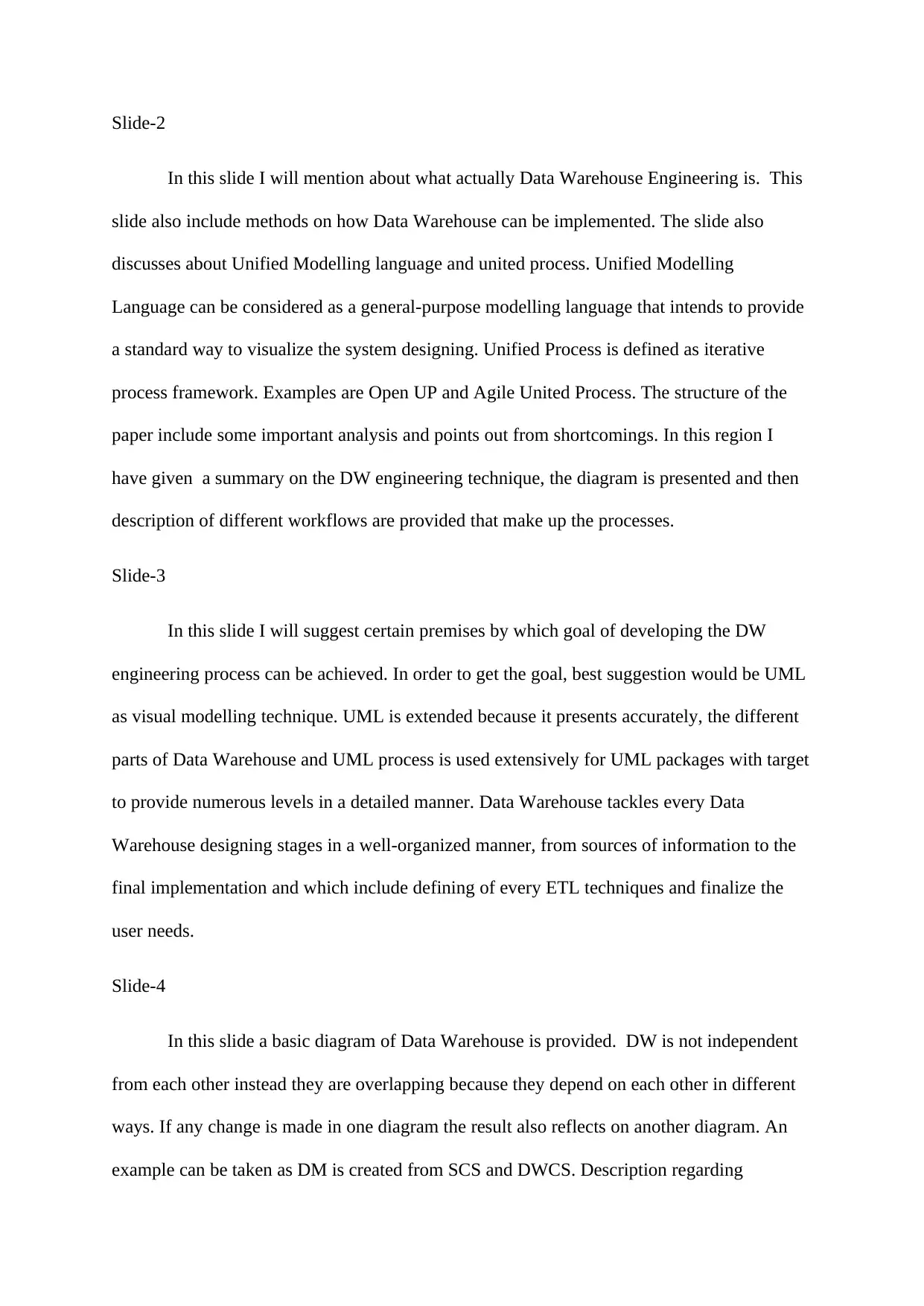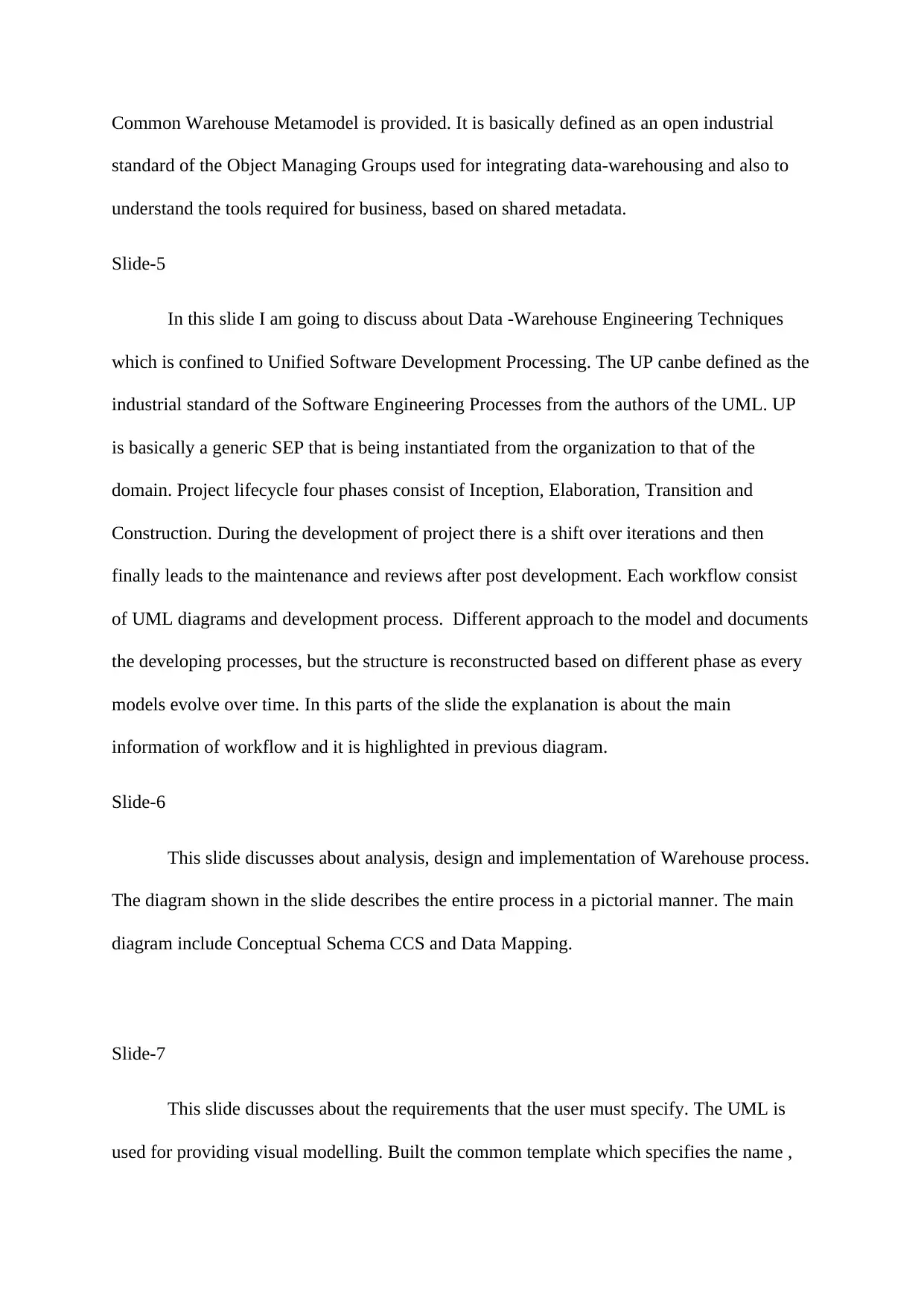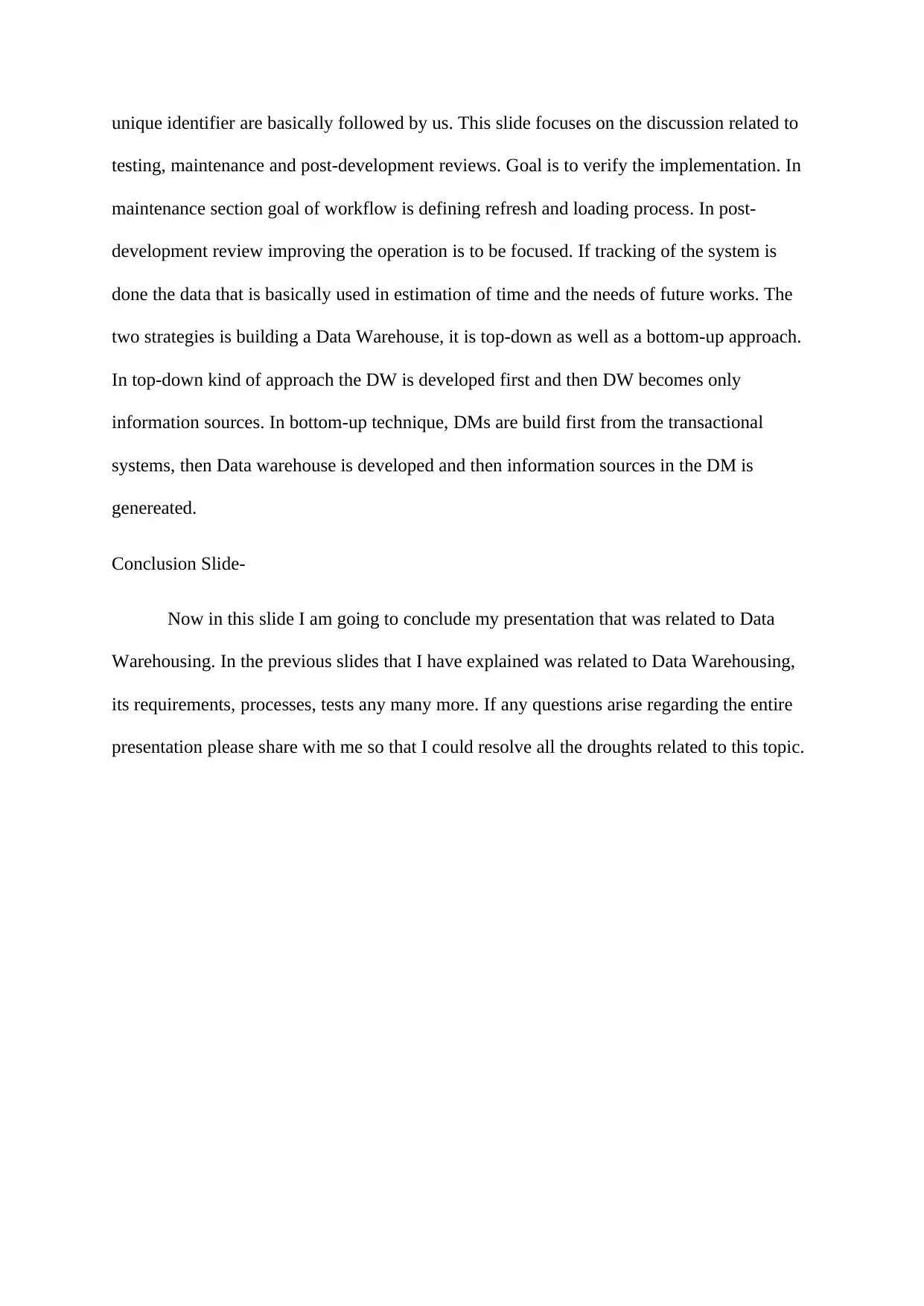Data Warehouse Engineering: Techniques, Processes, and Implementation
VerifiedAdded on 2023/04/19
|3
|784
|370
Presentation
AI Summary
This presentation provides a comprehensive overview of data warehouse engineering techniques, focusing on the Unified Modeling Language (UML) and Unified Process (UP). It explores the implementation methods for data warehouses, emphasizing the importance of UML as a visual modeling technique and UP as an iterative process framework. The presentation covers various stages of data warehouse design, from information sources to final implementation, including ETL techniques and user needs. It also discusses the relationships between different data warehouse components, the Common Warehouse Metamodel, and the application of Unified Software Development Processing. Furthermore, the presentation addresses the analysis, design, and implementation of warehouse processes, user requirements, testing, maintenance, and post-development reviews, highlighting both top-down and bottom-up strategies for building data warehouses. The goal is to provide a structured and detailed understanding of data warehouse engineering.
1 out of 3










![[object Object]](/_next/static/media/star-bottom.7253800d.svg)